Invited lectures 2010
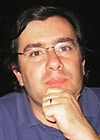 | Centre for Rapid and Sustainable Product Development Polytechnic Institute of Leiria Biomedical Applications of Additive Fabrication |
Tissue engineering is an interdisciplinary field that necessitates the combined effort of cell biologists, engineers, material scientists, mathematicians, geneticists, and clinicians toward the development of biological substitutes that restore, maintain, or improve tissue function. It has emerged as a rapidly expanding approach to address the organ shortage problem and comprises tissue regeneration and organ substitution. Cells placed on/or within constructs correspond to the most common strategy (“top-down approach) in tissue engineering. Cell seeding depends on fast attachment of cell to scaffolds, high cell survival and uniform cell distribution. The seeding time is strongly dependent on the scaffold material and architecture. Scaffolds provide an initial biochemical substrate for the novel tissue until cells can produce their own extra-cellular matrix (ECM). Thus, scaffolds not only define the 3D space for the formation of new tissues, but also serve to provide tissues with appropriate functions. These scaffolds are often critical, both in vivo (within the body) or in vitro (outside the body) mimicking in vivo conditions. “Scaffold-less” or “bottom-up” strategies, based on the use of bioprinting technologies and biomimetic bioprocessable hydrogels are also emerging processes. Additive fabrication processes represent a new group of non-conventional fabrication techniques recently introduced in the medical field. In the tissue engineering field, additive fabrication processes have been used to produce scaffolds with customised external shape and predefined internal morphology, allowing good control of pore size and pore distribution. This article provides a comprehensive state-of-the-art review of the application of biomanufacturing additive processes in the field of tissue engineering and explores the concept of direct cell-printing technologies. | |
 | Reebok, USA CAD, Rapid Prototyping and Footwear, what the hell were we thinking? |
This presentation will cover the history of CAD and Rapid Prototyping performed at Reebok in the product development process. We will discuss the early days beginning more than 16 years ago until today’s current operations. I will go over the key concepts of implementing these technologies into a business like Reebok’s. The issues and concepts include what are the expectations, who the customer really is, why we needed these tools in house, and how far we need to leverage these technologies in our near and distant futures. Many slides and possibly a few samples will be included. | |
 | Loughborough University, GB Development of Repository to Support Design for Additive Manufacturing |
At present there are few established design support tools to aid industrial designers to design products specifically for additive manufacturing (AM) processes, such as laser sintering. The aim of this research is to develop such a tool. Based on a semi-structured interview that was conducted to identify reasons for AM utilisation, a taxonomy has been developed that comprises five main design advantages of AM. These are design for user fit requirements, design for improved product functionality, design for aesthetics and form requirement, design for parts consolidation and design for dual materials. Each of these requirements has been expanded to include various examples of AM design features and applications so that industrial designers will be able to visualise and gather information that could be incorporated into their own design work. The next phase of the research is to obtain responses from industrial designers and use these to improve and validate the repository. | |
 | Executive Director: Technology Transfer and Innovation Vaal University of Technology, South Africa AM as Tool to support Sustainable Development |
AM has been around in South Africa since 1991, and has been through all the typical “new technology trigger trends”, such as starting the trigger at zero level, reaching the peak of inflated expectation, entering the valley of “disappointment” an dissolution (and desolation for the instigators / researchers ), entering the slope of enlightenment and into the plateau of productivity. “Productivity” as referred to here goes beyond the effective and repeatable production of a wide array / diverse range of products in a range of materials – it also refers to producing batches on a JIT or as needed base, in whatever configuration of design for X. The paper will reflect on the development of a sustainable R&D and technology transfer facility in a “remote” part of the world, and its very effective performance in supporting sustainable economic development, support of spin off companies and effectively working with and integrating government-funded research and development programmes, and will cover success stories in general product development, specialized product development such as medical applications, rapid tooling and rapid manufacturing – all in support of new venture creation. The speaker will also highlight the development path followed in South Africa, using a triple-helix approach. | |
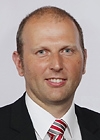 | voxeljet technology GmbH Latest improvement in industrial 3D-printing |
Voxeljet technology GmbH presents the latest developments in industrial 3D printing: The high-performance printing system VX800HP produces large plastic models and has an extra wide print head with more than 10,000 individually controllable nozzles. This allows the build space of 850 x 450 x 500 mm to be processed in less than 27 hours, with a layer thickness of 100 microns and 600 dpi print resolution. Purely white models with high definition print outs are generated through a new post treatment which could be used, for architecture or design parts for example. Voxeljet reaches new dimensions with the 3D-sandprinter VS4000, which can produce moulds with a size up to 4 x 2 x 1 m. | |
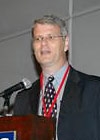 | Associate Professor, National University of Singapore RapidPRE: A new Additive Manufacturing Technique |
This presentation will cover a new Additive Manufacturing technique based on reactive extrusion. The approach allows the manufacture of high quality products from polyurethane materials with the possibility of composites and multiple materials in a single part. The use of these thermosetting polymers makes it possible to create parts that are better tailored to the final application and to prevent temperature based distortion during fabrication. | |
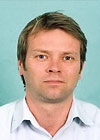 | Professor of Innovative Manufacturing, Loughborough University Is Additive Manufacturing an Environmental Panacea? |
There has been much anecdotal evidence and speculation concerning whether Additive Manufacturing may (or may not...) provide significant benefits in terms of reducing the carbon-footprint of manufactured goods. An on-going UK TSB funded project, with partners including Boeing, Bentley Motors, Virgin Atlantic, Delphi, MTT, Econolyst, Alcon and Loughborough University, has set out to determine and quantify whether this is indeed the case for Selective Laser Melting of Titanium and Aluminium components. Richard will give the latest results of the on-going ATKINS project that has so far yielded significant findings in areas of process development, materials mapping, design optimisation and business re-orientation. | |
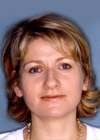 | Faculty of Medicine, University of Ljubljana Three-dimensional soft tissue analysis of pre and postoperative CIII orthognatic patients |
In standard diagnostic procedures, treatment predictions and validations of dentofacial deformities the facial appearance and soft tissues characteristics are not objectively analyzed. This is the reason that 3-dimensional (3D) imaging in maxillofacial surgery and orthodontics is a fast developing field. Several non-invasive and radiographic methods have been introduced in the last 20 years and they have proved valid and reliable as compared to direct anthropometry. The methods that render 3D imaging possible are photogrammetry, laser acquisition systems, structured light systems, video imaging, computerized tomography (CT), cone beam computerized tomography (CBCT), magnetic resonance imaging (MRI) and ultrasound (US). The objective present study was to determine differences between pre and postoperative CIII surgical patients and a normative dataset average male (AvM) and female (AvF) face. | |
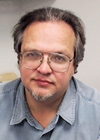 | Associate Professor, Director of Advanced Tissue Biofabrication Center, Department of Regenerative Medicine and Cell Biology, Medical University of South Carolina Toward Organ Printing: Future of Rapid Prototyping in Tissue Engineering |
Organ printing is a rapidly emerging variant of the biomedical application of rapid prototyping or additive manufacturing to the science of tissue engineering. Organ printing can be defined as a computer-aided robotic layer-by-layer additive biofabrication of 3D functional human tissue and organ constructs using self-assembling tissue spheroids as building blocks. The fundamental biophysical principle of organ printing technology is tissue spheroid fusion, driven by tissue surface tension. Organ printing includes three essential steps: (i) pre-processing or design of an "organ blueprint"; (ii) processing or bioprinting of 3D tissue and organ constructs using tissue spheroids as a "bioink"; and (iii) post-processing or accelerated tissue maturation. Using an analogy to text printing, it is possible to identify several critically important integral elements of organ printing technology: "blueprint" or computer-aided design of human organ construct in STL file, "bioink" or self-assembling tissue spheroids, "biopaper" or bioprocessible and biomimetic hydrogel, and a "bioprinter" or robotic dispensor. Organ printing represents a solid scaffold-free "bottom-up" modular approach in tissue engineering and a potentially superior alternative to the traditional solid scaffold-based "top-down" approach. Bioprinting a "built in" perfusable intraorgan branched vascular tree is critically important for maintaining the viability of bioprinted 3D thick human organ constructs. Combined employment of solid, mono-lumenal and multi-lumenal tissue spheroids is sufficient to bioengineer a complete intraorgan branched vascular tree. The feasibility of bioassembly of linear and branched segments of a vascular tree, using vascular tissue spheroids, has already been demonstrated. However, development of novel technologies for scalable biofabrication of tissue spheroids as well as new methods for accelerated tissue maturation are critical for successful clinical translation and commercialization of organ printing technology. The future bioassembly line for human organ bioprinting plants will include cell sorters, tissue spheroid biofabricators, robotic bioprinters and perfusion bioreactors integrated with novel devices for non-invasive and non-destructive biomonitoring of tissue and organ maturation and viability. In the short term, this emerging organ printing technology will be instrumental for robotic biofabrication of 3D models of vascularized human tissues and organs for modeling human diseases, drug discovery and toxicology research. In the long term, organ-printing technology can solve one of the most pressing clinical challenges: the shortage of human organs for transplantation. | |
 | RapidTech, the National Center for Rapid Technologies, USA Project Based Learning for Additive Manufacturing Processes |
The presenters will describe RapidTech’s approach to project based learning. The presenters will discuss how to incorporate this learning method for technical programs with examples of course construction and delivery. Examples will be shared of successful student projects and results of their efforts. Curriculum support material will be provided. | |
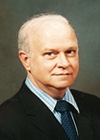 | 3D Medical Applications Center Walter Reed Army Medical Center, USA New Technologies Result in New Opportunities Rapid Manufactured Custom Implants, Fixation, and Medical Devices |
The advent of new manufacturing technology has opened up new opportunities in the arena of medical implants, fixation devices and instrumentation. New direct metal fabrication devices allow a manufacturer to design and build custom devices within a timeframe that fits even trauma surgeons. This presentation will focus on selecting appropriate technologies, materials, and device design, as well as discussing a selection of surgical cases that illustrate the importance of the types of cases chosen for this application. In addition, we will cover the associated problems we have experienced with hardware, software, and patient complications. | |
 | RapidTech, the National Center for Rapid Technologies, USA Project Based Learning for Additive Manufacturing Processes |
The presenters will describe RapidTech’s approach to project based learning. The presenters will discuss how to incorporate this learning method for technical programs with examples of course construction and delivery. Examples will be shared of successful student projects and results of their efforts. Curriculum support material will be provided. | |
 | Wohlers Associates, USA The Future of Additive Manufacturing |
The additive manufacturing (AM) industry will grow in new and exciting ways. A much larger number of people will become aware of AM and begin to use it for the first time. Meanwhile, sophisticated and veteran users and researchers will push the development of advanced composites and metal alloys for demanding aerospace, military, medical, and automobile applications. Meanwhile, AM systems will become available for a few thousand euros. High schools will use them as an integral part of their technology education programs. In the distant future, 3D printers targeted at children and their parents will become available for 100-150 euros. These non-professional and less capable systems will be used for entertainment and play. | |